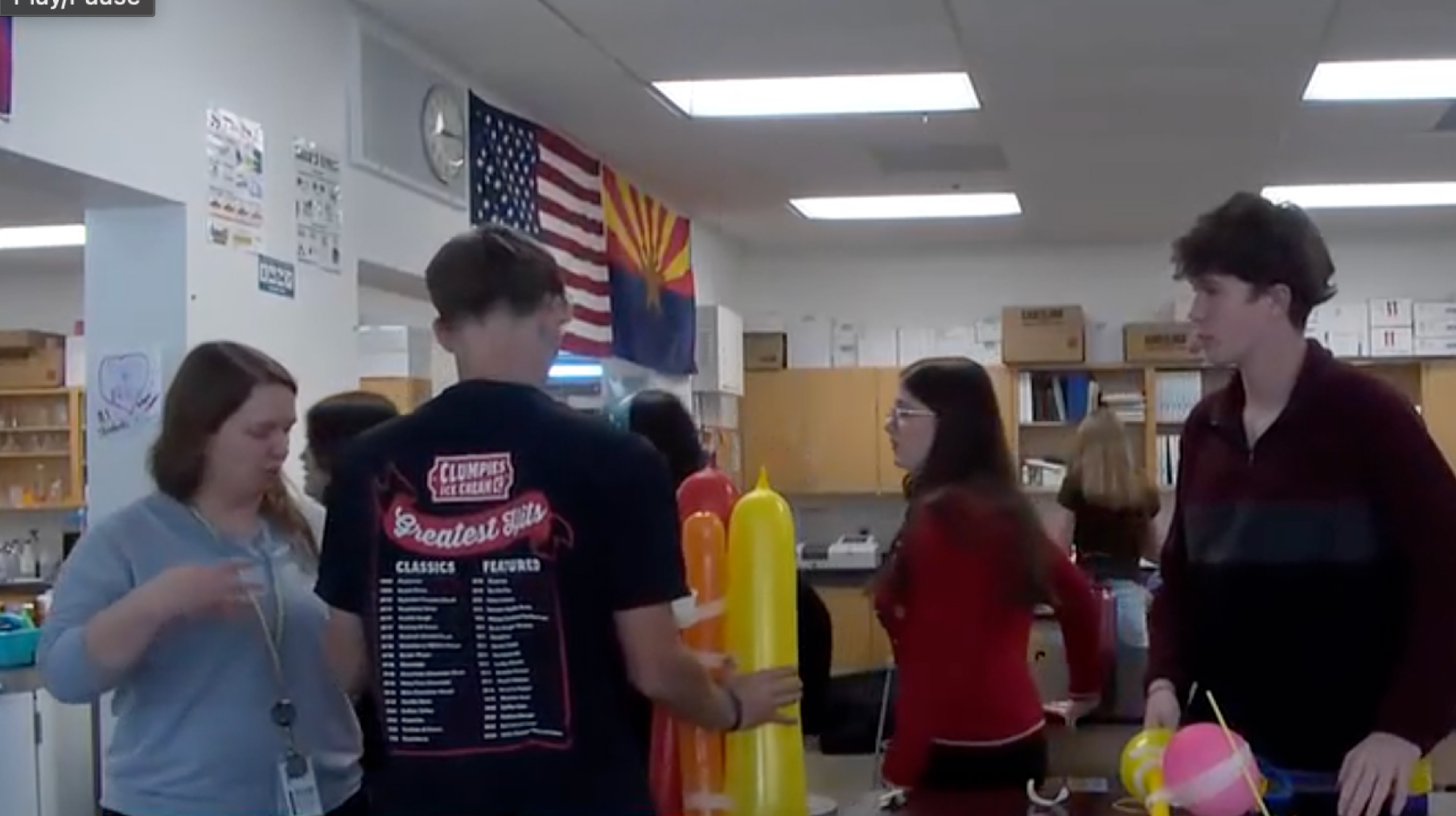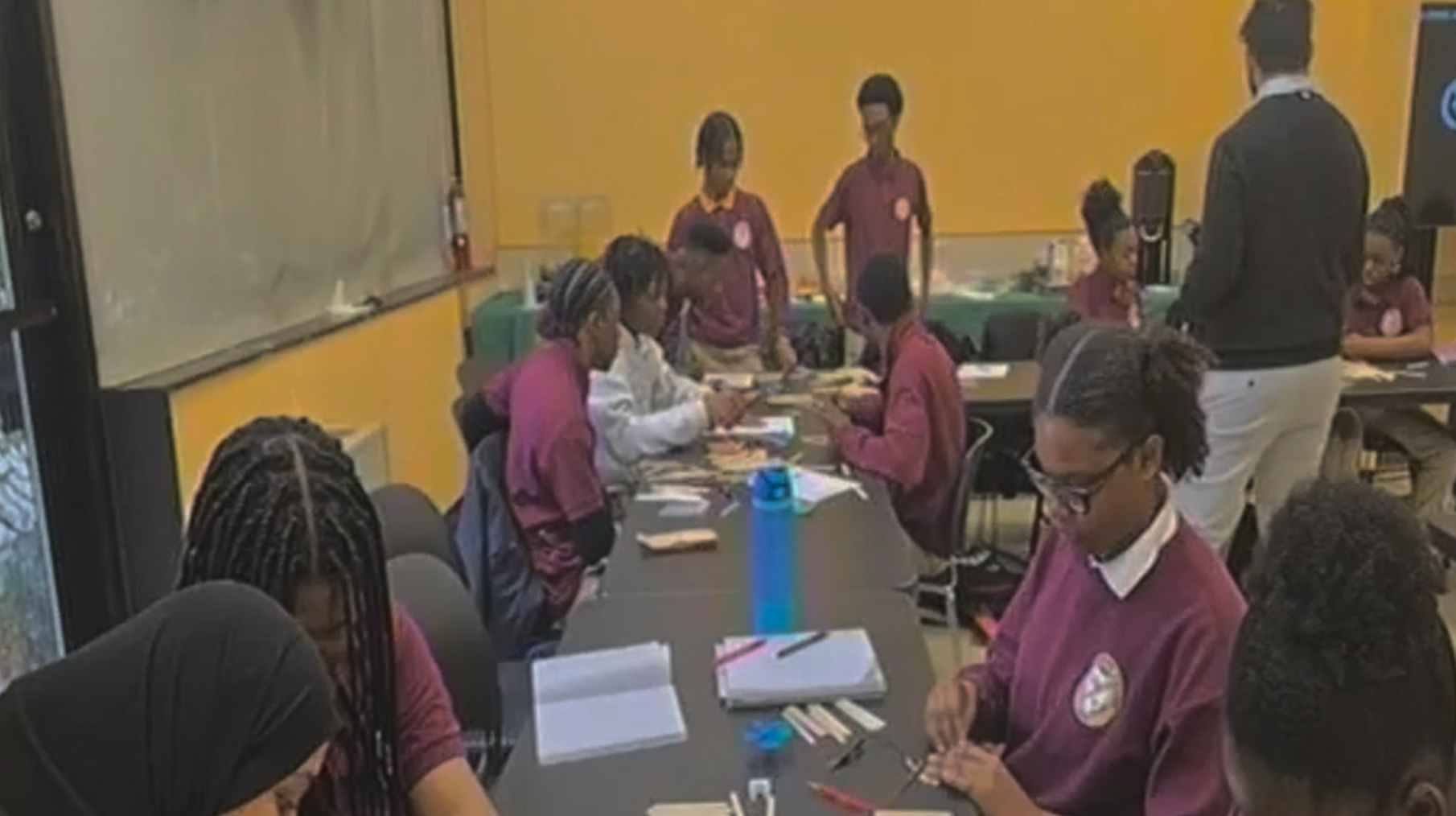
Building Bridges ToolKits Spur Creativity & Interest in STEM
March 9, 2021Building bridges has a positive and hopeful connotation to it. We want to build bridges across different communities, between friends and family, and even, to the future.
On March 2, St. Mary’s Ryken 9th graders each began to build real bridges, albeit somewhat diminutive in stature, in a hybrid virtual engineering lab in partnership with the Washington D.C. non-profit Engineering Tomorrow. Each student received a kit, pre-packaged and filled with individual lab materials and supplies – designed by a former NASA employee for maximum spatial effectiveness – and then worked with Edgar Martinez, a professional engineer based in New York City via a school broadcast zoom conference. Students learned some of the intricacies of bridges – their uses, their limitations, their cost – and then began building their own models using the supplies they were given. Across almost a dozen classrooms, SMR 9th graders stayed socially distanced but were able to have a hands-on lab learning experience.
The process continued on March 4 and 5 when college engineering students joined the zoom conference to answer questions from the students and tell their own stories about their studies, projects, and hopes for their careers. Engineering Tomorrow is dedicated to growing the number of engineers across the country and are privately funded to foster outreach to high schools up and down the East Coast. In normal times, they host labs in D.C., but worked last summer to create hybrid labs for schools so that they and the schools could continue to have hands on exciting STEM experiences.
SMR STEM teachers were excited as well and helped facilitate the creation and problem solving needed to build a bridge.
“Guiding this group of 9th graders through the bridge building experience makes it clear to me that our SMR community will uphold an exemplary STEM program for many years to come,” said Mr. Jonathan Smith, SMR engineering and mathematics teacher. Special shout out to John Michael Manato for his outstanding application of the design process. Great work class of 2024!”
“Our students excel when they’re learning by doing, and this program enforces the hands-on courses that our students get in the classroom,” said Marcos Lindekugel, SMR computer science teacher. “They love it when they see that they can use what they learned to help them change the world around them, they really get excited when they start combining elements from different classes in ways that their teachers didn’t even expect.”
Students drew schematics and then used hot glue guns, duct tape, dowel rods, and of course duct tape to create bridges that could hold weight.
“The goal of this program was to create excitement around STEM experiences and to start that spark of enjoyment and curiosity that younger students need to keep them interested and engaged in school. We couldn’t be more pleased with the kits, the expertise, and the fun that Engineering Tomorrow has helped us foster here at SMR,” said Mr. Brad Chamberlain, Dean of Academics.
SMR will have another Engineering Tomorrow hybrid lab about machine learning in April for all 10th-grade students. Mr. Chamberlain credits SMR STEM teachers for advocating that all of its 9th and 10th graders have this engineering exposure. “The engineering design process is a beautifully simple and versatile approach to problem-solving that we can all use in our daily lives,” said Mr. Smith. “It makes sense that our younger students experience this process early and regularly. My personal hope is that more students will enroll in engineering, biomedical, and computer science courses next year. The MIL STEM Lab is the perfect venue for our students to fine-tune their application of the engineering design process.”
“Engineering Tomorrow has been a great partner for us and we definitely want to continue working with them,” said Chamberlain. “Our students have really enjoyed these experiences and we hope to visit the D.C. location again in the 2021-22 school year.”





